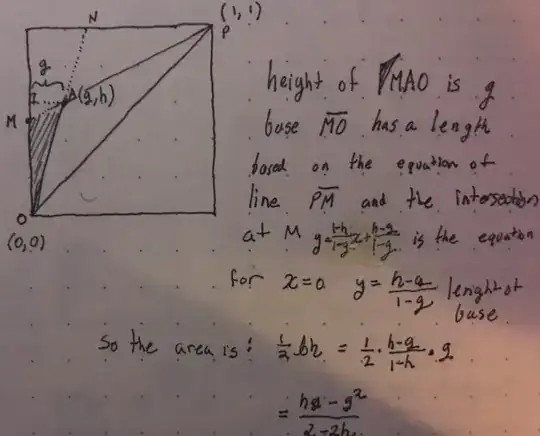Like many of the best problems I found this one on twitter.
"In a square with side length 1, two random points in the square are connected by segments to two opposite vertices. How likely is it that the two segments will intersect?"
Steve Phelps, who posted this problem, uses desmos to solve it by experimentation. Here is his notebook.
He gets a very low probability about of about .09. But, I'd like the algebraic result.
I've reduced the problem to the following:
WLOG we can consider the case where both of the randomly chosen points are on the same side of the diagonal formed by connecting the vertices we will connect to the random points. If we consider a random point A, then BP will intersect AO if B is in the shaded region.
What is the average area for that region if we pick a random point?
I did some snooping and random point picking can be a rich problem.
Maybe Steve had the right idea going with an experiment.
Still I'd like to work this out. I think I can use this formula:
With vertices: (0,0), (1,0), (0,1)
I don't know how to fix the vertices of the randomly picked triangle at $\left(0, \frac{h-g}{1-g}\right)$, (0,0) and (h,g) using this formula. So, maybe another approach is needed?


